Introduction
In the realm of international trade and technological innovation, success stories often arise when businesses venture into new territories, embracing both challenges and opportunities. Our case study illuminates one such compelling journey: the export of Insertion Type Magnetic Flowmeters to the dynamic and burgeoning Australian market.
These flowmeters, renowned for their accuracy and reliability in diverse industrial applications, became the focal point of an ambitious endeavor to establish a firm foothold in Australia. In this article, we will embark on a voyage that unveils the intricate strategies, decision-making processes, and market insights that fueled this remarkable export venture.
From meticulous market research to crafting a tailored export strategy, this case study unveils the comprehensive efforts that should be undertaken to ensure the seamless integration of Insertion Type Magnetic Flowmeters into the Australian industrial landscape.
Keep reading as we dissect the essential elements of this journey, offering valuable insights into the world of global trade and the strategic maneuvers that empower businesses to thrive in new horizons. In the following sections, we will navigate the challenges, and uncover the lessons that can inspire and inform businesses contemplating their own international expansion.
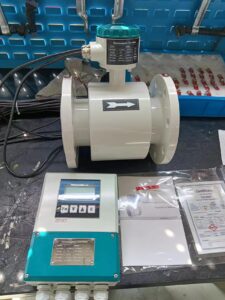
Background
In today’s industrial landscape, precision and efficiency are paramount. Magnetic flowmeters have emerged, playing a pivotal role in an array of industries. These ingenious devices have found their place in sectors as diverse as water management, chemical processing, pharmaceuticals, and beyond. Their significance lies in their ability to accurately measure the flow of conductive fluids, offering real-time data crucial for process control and optimization.
The Australian flow measurement technology market holds considerable significance within the broader global flow meter industry. This sector is currently experiencing positive growth trends, with a market value of USD 7.7 billion in 2021 and anticipated expansion to USD 10.3 billion by 2026. Anticipated growth is projected to continue steadily, with CAGR of 6.2% from 2021 to 2026. Australia and the Oceania region are steadily gaining prominence as key contributors to this global market landscape.
Projections indicate continued growth, with an estimated valuation of US$ 13.2 billion by 2033, driven by a 5.0% CAGR from 2023 to 2033.
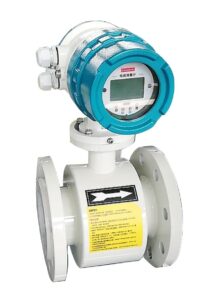
Nations and Companies Involved in the Export of Insertion Type Magnetic Flowmeter To Australia
Australia’s appetite for Magnetic Flowmeters has led it to forge robust trade ties with some of Asia’s industrial giants, reshaping the landscape of flow measurement technology in the land Down Under. As of July 2023, the top exporters to Australia include:
China: Emerging as the unrivaled leader, China takes the pole position, having shipped a staggering 1,190 Magnetic Flowmeters to Australia. This economic powerhouse not only meets demand but sets the pace.
India: Following closely in the race, India has become a formidable player in the Australian market, with 296 shipments. Its contributions are instrumental in shaping the flowmeter landscape.
Singapore: Navigating the podium, Singapore clinches third place with 217 shipments. This thriving city-state plays a pivotal role in ensuring the availability of these critical instruments.
These Asian nations, with their global prominence in the Magnetic Flowmeter arena, are the architects of Australia’s access to this cutting-edge technology. Among the key players is Zero Instrument, a company that offers a comprehensive spectrum of electromagnetic flow meters tailored to diverse Australian applications, from precise billing systems to water supply, mining, and irrigation solutions. Additionally, in industrial instrumentation, has been a reliable source of magnetic flow meters, underpinning Australia’s industrial infrastructure.
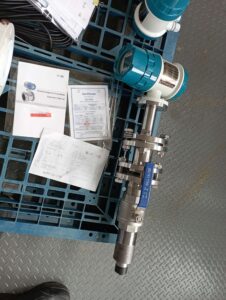
Market Research and Analysis
Before embarking on the journey of introducing Insertion Type Magnetic Flowmeters to the Australian market, thorough research and analysis play a pivotal role in shaping the strategy and ensuring a seamless entry. This section delves into the comprehensive groundwork undertaken in preparation for this venture, shedding light on critical factors that guide the path to success.
Research and Analysis
The initial phase of market entry is marked by exhaustive research and in-depth analysis. This involves a meticulous examination of several key aspects:
Market Demand: Understanding the prevailing demand for flow measurement technology within Australia is paramount. Extensive surveys, customer interviews, and data analysis are conducted to gauge the needs and preferences of potential clients. This not only identifies existing demand but also uncovers latent requirements that can be tapped into.
Competition: Assessing the competitive landscape is also essential to identify existing players, their market share, and the strategies they employ. This helps in positioning Insertion Type Magnetic Flowmeters effectively and formulating strategies to stand out in a crowded marketplace.
Regulatory Considerations: Compliance with Australian standards and regulations pertaining to flow measurement technology is imperative. This involves liaising with local authorities, understanding certification requirements, and ensuring that the product adheres to all necessary guidelines.
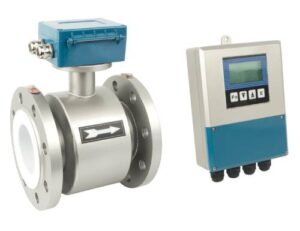
Key Findings
The research journey has unveiled pivotal insights that collectively illuminate a roadmap for success in the Australian market. Let’s thread these findings together:
A Thriving Demand for Accuracy: The Australian market stands at the cusp of transformation, driven by a growing need for precise flow measurement solutions. Industries spanning water management to manufacturing are leading this charge, seeking reliable tools to enhance their operations.
Filling the Market Gap: Within this landscape, a conspicuous void exists – the demand for adaptable and precise flow meters far outweighs the current supply. This void represents a golden opportunity, one that Insertion Type Magnetic Flowmeters are perfectly poised to fulfill.
Competitive Edge through Innovation: In the quest to seize this opportunity, competitive analysis has uncovered a clear path forward. To excel in this dynamic arena, differentiation through innovative features, an unwavering commitment to superior customer service, and the provision of tailored solutions that meet the unique needs of Australian industries are key.
Crafting a Distinctive Identity: Beyond products, the paramount importance of a robust brand presence is recognized. The journey includes the deliberate cultivation of a brand identity that resonates deeply with Australian consumers. The commitment is to deliver an experience that not only meets but exceeds expectations, underpinned by a robust after-sales support system.
Sailing the Regulatory Waters: Navigating the labyrinth of regulations may seem daunting, but a course has been charted with confidence. The journey through these regulatory waters is not only manageable but also presents an opportunity to showcase a commitment to excellence. The necessary certifications are well within grasp, thanks to meticulous product design and stringent quality assurance protocols.
In sum, the research findings intertwine to form a compelling narrative. They reveal a market ripe for innovation, and the mission is to lead the charge.
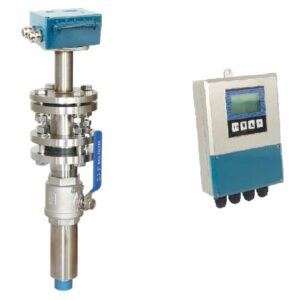
Challenges and Solutions
As the journey unfolds to export Insertion Type Magnetic Flowmeters to the Australian market, it is not without its fair share of challenges. This section delves into the hurdles encountered during this endeavor and the resourceful solutions devised to overcome them, emphasizing the significance of adaptability and problem-solving in the process.
Challenges Faced
Market Entry Complexity: The Australian market presents complexities, including stringent regulatory requirements and a highly competitive landscape. These factors pose initial barriers to entry.
Distribution Logistics: The vast expanse of Australia poses logistical challenges in terms of efficient distribution and timely delivery to diverse regions.
High Initial Costs: Magnetic flowmeters, especially insertion types, may have a relatively high initial cost compared to other types of flow meters like ultrasonic or turbine meters. This can be a barrier to entry for potential buyers in the Australian market, where cost-effectiveness is a significant concern.
Competition with Other Flow Meter Technologies: Insertion magnetic flowmeters face competition from other flow meter technologies such as ultrasonic meters. Understanding the advantages and disadvantages of magnetic flowmeters compared to these alternatives is crucial for effective market penetration.
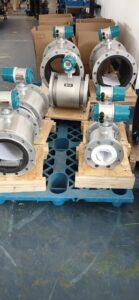
Solutions to Be Implemented
Compliance and Regulatory Adherence: Extensive efforts should be directed toward meeting Australian regulatory standards. By collaborating with local experts and authorities, the necessary certifications and compliance checks should be efficiently navigated. This not only ensures product legitimacy but also builds trust with customers.
Dynamic Pricing Strategy: A flexible pricing strategy should be adopted, tailored to different market segments. Special pricing packages and incentives for bulk orders should be introduced, striking a balance between competitiveness and profitability. This approach allows for the accommodation of various customer needs.
Multi-Channel Distribution: A multi-pronged distribution strategy should be implemented. This involves collaborating with local distributors and wholesalers to ensure widespread availability. Concurrently, a direct sales channel should be established to cater to larger enterprises. This dual approach streamlines product access across diverse regions.

Importance of Adaptability and Problem-Solving
The necessity of adjusting to changing circumstances and actively tackling challenges remains vital throughout the export process. Flexibility in pricing, compliance with regulations, and diversification of distribution channels are key solutions that showcase adaptability.
Problem-solving plays a pivotal role in mitigating issues. Swift responses to pricing pressures, collaboration with local experts, and strategic partnerships are manifestations of effective problem-solving. These dynamic solutions not only facilitate market entry but also set the stage for sustained success.
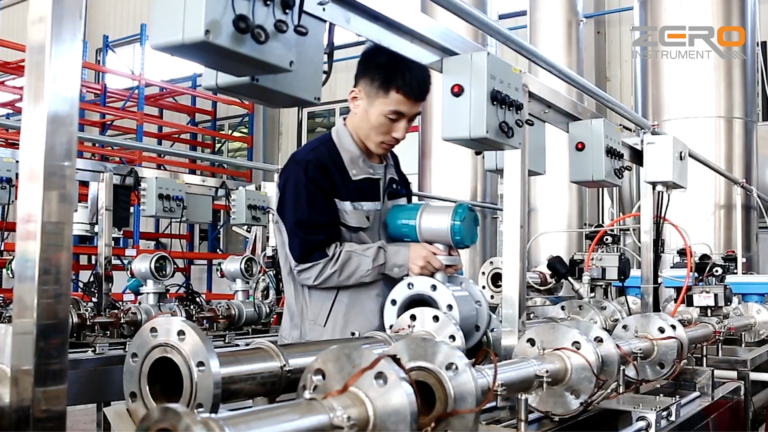
Lessons Learned: Insights for Future Endeavors
This case study has provided invaluable lessons and insights that will inform future export endeavors:
Adaptability is Crucial: The capacity to adjust to shifting market dynamics and unforeseen obstacles is of utmost importance. Being flexible in pricing, distribution, and marketing strategies guarantees a competitive advantage.
Research is Non-Negotiable: Comprehensive market research is the bedrock of a successful export strategy. Understanding market demand, competition, and regulatory considerations is essential.
Customer-Centric Approach: Prioritizing customer feedback and satisfaction fosters brand loyalty and drives growth. A customer-centric approach should remain at the forefront of all business activities.
Global Branding: Success in one market can serve as a springboard for international recognition. Building a strong global brand presence is an invaluable asset.
